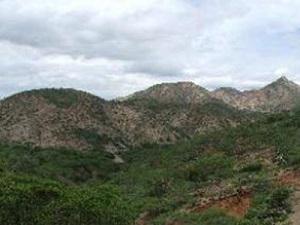Jose Antonio Gonzalez
This project will evaluate the relative importance of these plants in the diet of a bird community associated with arid zones, contrasting agricultural versus wild areas. Showing that cacti and agaves can be important for the bird assemblage can be used as a strong argument in favour of the conservation of these neglected plants and their habitats.

Aratinga pertinax. Brown-throated parakeet.
Neotropical arid regions are examples of highly disturbed and unprotected ecosystems and efforts made in favour of their conservation are scarce. In the case of Venezuela, arid and semiarid zones are considered ‘Endemic Bird Areas’ because of the presence of several habitat-specialist species. At present, Venezuelan arid environments are under growing agricultural and urban pressures, threatening the future of many species in them. We need to address this problem by focusing on groups of organisms that can be used to demonstrate the fragility of the system and the importance of keystone species.

Parque Nacional Cerro Saroche.
The different guilds of birds associated with arid zones represent a good study system to determine how animal communities use food resources, what species can be considered keystone for their maintenance, and how bird assemblages can be affected by human activities such as agriculture. Cacti and agaves are important elements of arid zones. In this project I will evaluate the relative importance of these plants in the diet of a bird community associated with arid zones, contrasting agricultural versus wild areas. Showing that cacti and agaves can be important for the bird assemblage can be used as a strong argument in favour of the conservation of these neglected plants and their habitats. I will also compare the effect of agricultural activities on the composition and structure of the bird assemblage by comparing species richness and diversity between pristine zones and areas disturbed with agricultural development.
In order to achieve these goals, I will select one pristine zone and other with patchy agricultural activity. In each site I plan to conduct the following activities on a bimonthly basis:
(1) systematic capture of birds,
(2) species identification,
(3) faeces collection,
(4) collection of plant and insect tissues,
(5) collection of blood and feather samples for stable isotope analyses.
With these samples I will get the following information:
(1) species composition and structure of the bird assemblages,
(2) species diet,
(3) relative importance of cacti and agaves (CAM plants) versus C3 plants in each study site based on carbon and nitrogen stable isotope analyses.
By combining these results I will try to establish relative importance of cacti and agaves in the diet of the different guilds of birds surveyed in the study sites. Overall, this project will contribute to a better understanding of key elements that need to be considered to preserve biodiversity in Neotropical arid ecosystems.